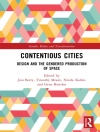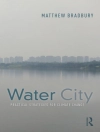This book is an unusual attempt to study urban regeneration. First, it is based on mapping the realities of urban regeneration case study examples and their impacts on people, places, and city life experiences. Second, it is context-specific, exploring only a particular region rather than covering one country or multiple locations. Hence, the aim is to avoid generic and global solutions but rather focus on local pathways and directions. Third, it delves into specific case study examples that could share some lessons for research, practice, and academia, particularly in the field of urban regeneration.
This book is the first of (hopefully) many more on the way in urban mapping studies with various themes and focus areas. The ultimate goal is to ensure urban mapping is recognized well and practiced extensively in research and education. It is essential to map realities in cities and communities, those that we usually witness but should be experienced, perceived, and touched—not just via desk research. Mapping techniques are more than just common tools in urbanism, urban geography, urban studies, urban planning, etc. They are not just tools but inventive ways of understanding cities, places, communities, experiences, and people. Thus, in this book, we try to understand more about people and places through life experiences and mapping the urban regeneration projects of multiple cities in Yunnan Province.
This collection is based on a very concise context-specific research focused on only one region. The decision to do so is intentional, just because contextual, cultural, and local attributes need to be looked at more accurately, considerably, and dexterously. Hence, this collection delves into case study examples of an inspiring location where traditions remain, resources are plenteous, and cultures are diverse. Yunnan is one of the few provinces left in China that offers a lot for comprehensive research studies at the urban, rural, andtownship levels. The experiences we gained from mapping studies, observations, and multi-stakeholder engagements are exceptionally rich and vibrant, allowing us to think more holistically and find ways and suggestions beyond just the generic globalized models elsewhere. We hope the book will be useful to various stakeholders, particularly urban specialists, researchers, and students. It is also a valuable collection for policymakers, decision-makers, and governmental authorities, who should refrain from top-down processes and bring back people to the heart of urban regeneration processes.
Tabla de materias
Mapping Urban Regeneration: Introduction to the New, the Old, and the New Old.- Regenerating the Local Industries and Urban Experiences that Matter.- Urban Regeneration and the Inevitable Gentrification: The study of Displaced Communities in the City of Dali.- Urban Regeneration and Building Colours: Mapping Visual and Perceptual Dimensions in Dali’s Old Towns.- Urban Regeneration and Creating Urban Landscapes: Enhancing City Life Experiences in Lijiang.- Urban Regeneration and In-between spaces: Mapping the Social Life of Lijiang’s Old Towns.- Regenerating the Local Characteristics: The Impacts on City Life experience and Identity of Shangri-La’s Old Town.- City Life Experiences: Lessons Learnt for Future Urban Regeneration Strategies.
Sobre el autor
Ali Cheshmehzangi is the World’s top 2% field leader, recognised by Stanford University. He is an urbanist and urban designer by profession and by heart. He studies cities and city transitions, sustainable urbanism, and integrated urban design strategies. He has recently taken a senior leadership and management role at Qingdao City University (QCU). He is Professor of Urban Planning, Director of the Center for Innovation in Teaching, Learning, and Research, and Advisor to the Department’s international communications at QCU. Over 11 years at his previous institute, Ali was Full Professor in Architecture and Urban Design, Head of the Department of Architecture and Built Environment, Founding Director of the Urban Innovation Lab, Director of Center for Sustainable Energy Technologies, Interim Head of Research Group for Sustainable Built Environment, and Director of Digital Design Lab. He was Visiting Professor and now Research Associate of the Network for Education and Research on Peace and Sustainability (NERPS), Hiroshima University, Japan. So far, Ali has published over 300 journal papers, articles, conference papers, book chapters, and reports. His other 13 books are titled ‘Smart-Eco Cities in China: Trends and City Profiles 2016’ (2016), ‘Designing Cooler Cities’ (2017), the award-winning ‘Eco-development in China’ (2018), ‘Sustainable Urban Development in the Age of Climate Change’ (2019), ‘Identity of Cities and City of Identities’ (2020), the double award-winning ‘The City in Need’ (2020), ‘Urban Memory in City Transitions’ (2021), ‘Sustainable Urbanism in China’ (2021), ‘China’s Sustainability Transitions’ (2021), ‘Urban Health, Sustainability, and Peace in the Day the World Stopped’ (2021), ‘Green Infrastructure in Chinese Cities’ (2022), ‘ICT, Cities, and Reaching Positive Peace’ (2022), and ‘China’s City Cluster Development in the Race to Carbon Neutrality’ (2022). Ali is globally known for his research on ‘urban sustainability’.












